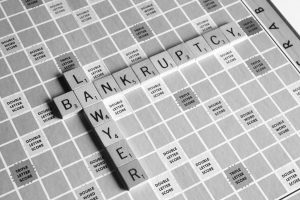Ian remnants erode N.J. beaches, creating dramatic 12-foot cliffs in some spots (PHOTOS)

The remnants of Hurricane Ian continue to hammer New Jersey with rain and fierce gusts of wind this week, as parts of the states coastline see dramatic cliffs from beach erosion.
Some dunes in Beach Haven on Long Beach Island have 10 to 12-foot vertical drops, said James Sferra, the recycling coordinator in the public works department.
Today theyre mostly pretty good sized cliffs, he told NJ Advance Media. (Its) very, very difficult to get on the beach. Theyre just straight, vertical (cliffs).
A handicapped area at one street for people to walk onto the beaches is just gone, he added. Further south, dunes are scattered all over, Sferra added.
The storm is caused by the remnants of Hurricane Ian, which caused devastation in parts of Florida and the Carolinas, and killed more than 65 people, according to the Associated Press.
In New Jersey, rain has continued to fall for several days and on Monday, high gusts of wind created tidal surges, producing flooding and beach erosion.
As the wind starts to die down by Wednesday, Sferra said the department will bring out its bulldozers and begin pushing the sand back in place, so people have access to the beach.
Fortunately, it wasnt during the summertime, so it wasnt heavily populated, he said.
Rough surf caused by the remnants of Hurricane Ian damages beaches and dunes in Harvey Cedars, NJ, Tuesday, October 4, 2022. Jim Lowney | For NJ Advance Media
Rough surf caused by the remnants of Hurricane Ian damages beaches and dunes in Beach Haven, NJ, Tuesday, October 4, 2022. Jim Lowney | For NJ Advance Media
About 12 miles north on the island, Harvey Cedars also experienced significant dune damage, said Harvey Cedars Police Department Chief Robert Burnaford. Consistent winds up to 55 miles per hour over the last few days have slowly chipped away at the beach, he said.
Its just been a slow, gradual, consistent daily, daily beating, Burnaford said. So every minute, every hour, that consistent wind just kept eating away, eating away, eating away.
And its ongoing because its still northeast winds, 25 to 35 mile per hour, he added.
Public works employees will initially put up caution tape to warn people of the cliffs, and then begin the process of restoring the walkways to the beaches soon, Burnaford said.
Stewart Farrell, the director and founder of the Coastal Research Center at Stockton University, said dune erosion has been widespread along the states barrier islands, from the north end of Avalon to Ocean City and Atlantic City.
Basically, the ocean is pretty riled up, he said, noting that the waves are large, and when high tide occurs, the waves have reached into the dunes.
The worst beach erosion he said he saw was in Strathmere, an unincorporated area in Upper Township, in Cape May County. There, the dune was completely in one section completely erased, he said.
Other parts of the Shore also saw significant flooding, particularly on the bay side, Farrell said. The flooding presents a danger when people try to drive through, he said.
People insist on driving through saltwater, Farrell said. The modern automobile and saltwater do not go well together.
The public should avoid driving through flooded roads near the coast, even if it appears shallow, he said.
The hurricanes remnants are expected to finish up by Wednesday night. Sunny, pleasant conditions are expected to return on Thursday, according to the National Weather Service.
(This) is going to be the last of it for now, Farrell said. And if we have another one, well, well see what happens, because were not done with hurricane season yet.13
Rough surf caused by the remnants of Hurricane Ian damages beaches on Long Beach Island, NJ
Our journalism needs your support. Please subscribe today to NJ.com.
Brianna Kudisch may be reached at bkudisch@njadvancemedia.com.




